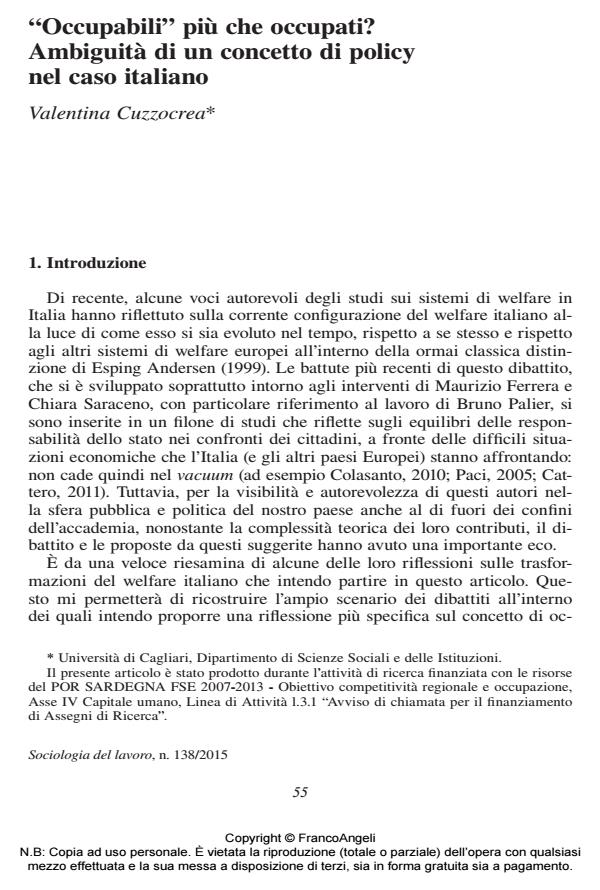"Employable" rather than employed? Ambiguities of a policy concept in the Italian case
Journal title SOCIOLOGIA DEL LAVORO
Author/s Valentina Cuzzocrea
Publishing Year 2015 Issue 2015/138
Language Italian Pages 14 P. 55-68 File size 109 KB
DOI 10.3280/SL2015-138004
DOI is like a bar code for intellectual property: to have more infomation
click here
Below, you can see the article first page
If you want to buy this article in PDF format, you can do it, following the instructions to buy download credits

FrancoAngeli is member of Publishers International Linking Association, Inc (PILA), a not-for-profit association which run the CrossRef service enabling links to and from online scholarly content.
According to the principle of employability, promoted by the European Union and by various national governments among which the Italian one, the worker or the job seeker is deemed responsible for his /her position in the labour market. The focus on the possibility to improve one’s ability to locate him/herself in the labour market, and to keep a position within, gives shape to an employability discourse, which has become dominant in employment and education policies. Despite its diffusion, the concept of employability has remained mainly a policy concept and has rarely been an issue of theoretical assessment. This article reflects on the definition of this concept, putting it in relation to the Italian context and more specifically to some recent debates on how the Italian welfare system is changing, thus aiming to reveal some of the ambiguities of this concept, including its ideological values, and concluding that an improved employability does not necessary lead to improved employment rates.
Keywords: Employability, welfare system, Italy, discourses, neoliberal ideology
- Stasis in Moltmann e Schmitt (Stasis in Moltmann and Schmitt) P. G. Monateri, in SSRN Electronic Journal /2013
DOI: 10.2139/ssrn.2373071 - Youth and Unconventional Political Engagement Ilaria Pitti, pp.63 (ISBN:978-3-319-72136-1)
- Diversity and Inclusion in Italy Fabio Gaspani, Sara Recchi, Anna Rio, pp.637 (ISBN:978-3-031-81937-7)
- Generations Z in Europe Sebastiano Benasso, Valentina Cuzzocrea, pp.149 (ISBN:978-1-78973-492-8)
Valentina Cuzzocrea, "Occupabili" più che occupati? Ambiguità di un concetto di policy nel caso italiano in "SOCIOLOGIA DEL LAVORO " 138/2015, pp 55-68, DOI: 10.3280/SL2015-138004